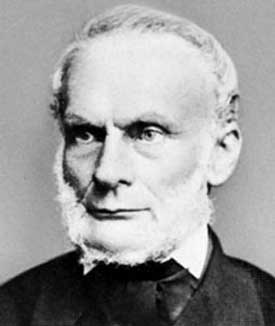
Philipp Ludwig von Seidel
 المؤلف:
F Lindemann
المؤلف:
F Lindemann
 المصدر:
Gedächtnisrede auf L Ph von Seidel
المصدر:
Gedächtnisrede auf L Ph von Seidel
 الجزء والصفحة:
...
الجزء والصفحة:
...
 13-11-2016
13-11-2016
 1016
1016
Born: 24 October 1821 in Zweibrücken, Germany
Died: 13 August 1896 in Munich, Germany

Philipp von Seidel's mother was Julie Reinhold. His father, Justus Christian Felix Seidel, worked for the German post office and his job entailed him moving frequently. This meant that Philipp attended several different schools during his upbringing. The first of these schools was in Nördlingen, the next was in Nuremberg, then finally he completed his school education in Hof.
Although Seidel completed his school studies in the autumn of 1839 he did not enter university immediately but received private coaching in mathematics before beginning his university career. He was coached by L C Schnürlein who was a mathematics teacher at the Gymnasium in Hof. This was valuable coaching for Seidel, particularly since Schnürlein was a good mathematician who had studied under Gauss.
Seidel entered the University of Berlin in 1840 and studied under Dirichlet and Encke. The custom among German students at this time was to spend time at different universities and, following the usual custom, Seidel moved to Königsberg in 1842 where he studied under Bessel, Jacobi and Franz Neumann. In the autumn of 1843 Jacobi left Königsberg on the grounds of ill health and set off for Italy with Borchardt, Dirichlet, Schläfli and Steiner. Bessel certainly seems to have expected Jacobi to be away from Königsberg for a long while since he advised Seidel to go to Munich to study for his doctorate. He obtained his doctorate from Munich in 1846 for a thesis Über die beste Form der Spiegel in Teleskopen. Six months later he submitted his habilitation dissertation Untersuchungen über die Konvergenz und Divergenz der Kettenbrüche and qualified to become a lecturer at Munich. It is worth noting that these two theses, submitted only six months apart, were on two completely different topics - the first was on astronomy while the second was on mathematical analysis.
Like these two theses, Seidel worked on dioptics and mathematical analysis throughout his career. His work on lenses, and identified mathematically five coefficients describing the aberration of a lens, now called 'Seidel sums'. These Seidel sums correspond to spherical aberration, coma, astigmatism, Petzval curvature and distortion. He also introduced the concept of nonuniform convergence and applied probability to astronomy.
Seidel progressed rapidly at Munich. He was appointed as an extraordinary professor in Munich in 1847 and then an ordinary professor in 1855. He received many honours such as appointment as a Royal Privy Councillor. He received many medals for his work and, in 1851, was elected to the Bavarian Academy of Sciences. Other academies also honoured him, for example he was elected to the academies of Göttingen and of Berlin.
An interesting aspect of Seidel's astronomical work involved, as we mentioned above, the use of probability theory. However, he did not restrict his use of this mathematical discipline to astronomy, for he also applied his skills in this area to study the frequency of certain diseases and also looked at certain questions relating to the climate. He lectured on probability theory, and also on the method of least squares.
Problems with his eyesight forced Seidel into early retirement. Since he had never married he had no immediate family to help him when he became ill, but he had an unmarried sister Lucie Seidel who looked after him until 1889. By this time he certainly could not care for himself, yet had no family who could help out. In his last seven years he was looked after by the widow of a clergyman.
- H-C Frieisleben, Biography in Dictionary of Scientific Biography (New York 1970-1990).
http://www.encyclopedia.com/doc/1G2-2830903954.html
Books:
- F Lindemann, Gedächtnisrede auf L Ph von Seidel (Munich, 1898).
 الاكثر قراءة في 1820to1829
الاكثر قراءة في 1820to1829
 اخر الاخبار
اخر الاخبار
اخبار العتبة العباسية المقدسة


